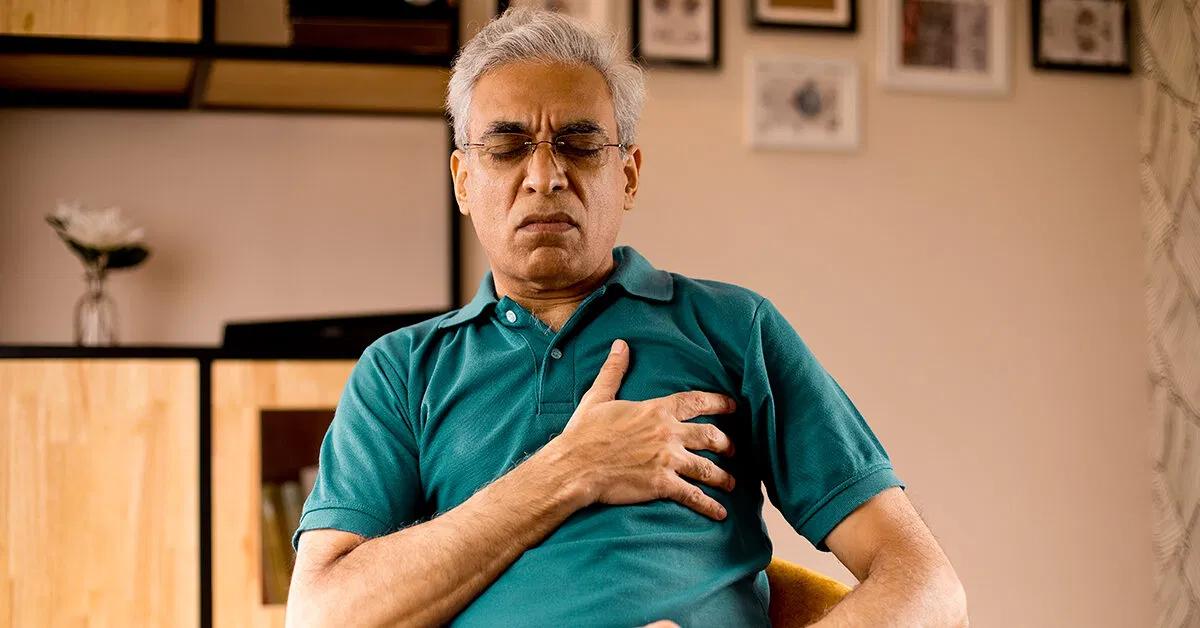When you quit smoking, it is not uncommon to experience chest pain or tightness as a withdrawal symptom. This can be alarming, especially since smoking itself can cause chest pain. However, it is important to understand that this chest pain is temporary and a sign that your body is healing. In this article, we will explore why chest pain occurs after quitting smoking, how long it lasts, and how to manage it.
Why Does Chest Pain Occur After Quitting Smoking?
When you stop smoking, your body experiences nicotine withdrawal. This sudden lack of nicotine in your bloodstream can lead to various side effects, including chest pain or tightness. Your body becomes accustomed to a steady dose of nicotine, and when it is suddenly removed, it can cause your body to react. The chest pain may be a result of anxiety or stress, as well as increased mucus production as your body tries to expel the buildup in your lungs. Additionally, the inflammation in the cells lining your blood vessels, caused by regular smoking, may cause your chest to feel tight and tense as your body adjusts to the change. It is important to note that this pain is temporary and will subside as your body continues to heal.
How Long Does Chest Pain Last After Quitting Smoking?
The duration of chest pain after quitting smoking can vary from a few days to a few weeks. According to the National Cancer Institute, withdrawal symptoms tend to peak around 3 days after quitting and gradually subside over the next 3 to 4 weeks. While physiological symptoms like chest pain or tightness should not last long, other symptoms such as anxiety or depression may persist for a longer period.
Managing Chest Pain After Quitting Smoking
If you are experiencing chest pain after quitting smoking, there are several strategies you can try to alleviate the discomfort:
- Talk to a healthcare professional: Consider discussing your symptoms with a healthcare professional who may recommend nicotine replacement therapy, such as gum, lozenges, patches, or other products, to help manage withdrawal symptoms and cravings.
- Reduce stress: Since anxiety can trigger chest pain, finding ways to reduce stress can help alleviate symptoms. Engaging in light exercise, practicing relaxation techniques like breathing exercises, yoga, or meditation, and joining a support group for others quitting smoking can all be beneficial.
- Avoid triggers: Stay away from situations or environments that may trigger cravings or remind you of smoking. This can help reduce the likelihood of experiencing chest pain or tightness.
When to Seek Medical Attention
In most cases, chest pain after quitting smoking is not a cause for serious concern. However, it is essential to be aware of the symptoms that may indicate a heart attack, regardless of whether you smoke or not. Seek emergency care if you experience any of the following symptoms:
- Chest pain or discomfort that feels like a squeezing sensation or intense pressure
- Pain that radiates from the chest to the shoulder, arms, neck, or jaw
- Cold sweats
- Nausea
- Vomiting
- Fatigue
- Dizziness
- Difficulty breathing
- Symptoms that last for more than 15 minutes
Frequently Asked Questions
What Does Stage 1 Emphysema Feel Like?
Stage 1 emphysema is often asymptomatic, meaning it may not cause noticeable symptoms. However, as the condition progresses, common symptoms include shortness of breath, coughing with mucus, wheezing, and chest tightness.
What Are the Signs of Emphysema?
Signs and symptoms of emphysema typically develop over several years. Once they start, they commonly include shortness of breath, chronic cough with mucus production, wheezing, and chest tightness.
What Does COPD Chest Pain Feel Like?
COPD (Chronic Obstructive Pulmonary Disease) is a condition that affects lung function. Chest pain associated with COPD may feel like tightness or pressure in the chest. It is important to note that chest pain in COPD can also be a symptom of a heart-related issue, so it is crucial to seek medical attention if you are experiencing chest pain or discomfort.
In conclusion, experiencing chest pain or tightness after quitting smoking is a common withdrawal symptom. It is temporary and a sign that your body is healing. However, if you have any concerns or experience severe symptoms, it is always best to consult with a healthcare professional. Quitting smoking is a significant step towards improving your overall health, and the short- and long-term benefits far outweigh any temporary discomfort.
If you want to know other articles similar to Understanding chest pain after quitting smoking - how to manage it you can visit the Health category.


Related Articles